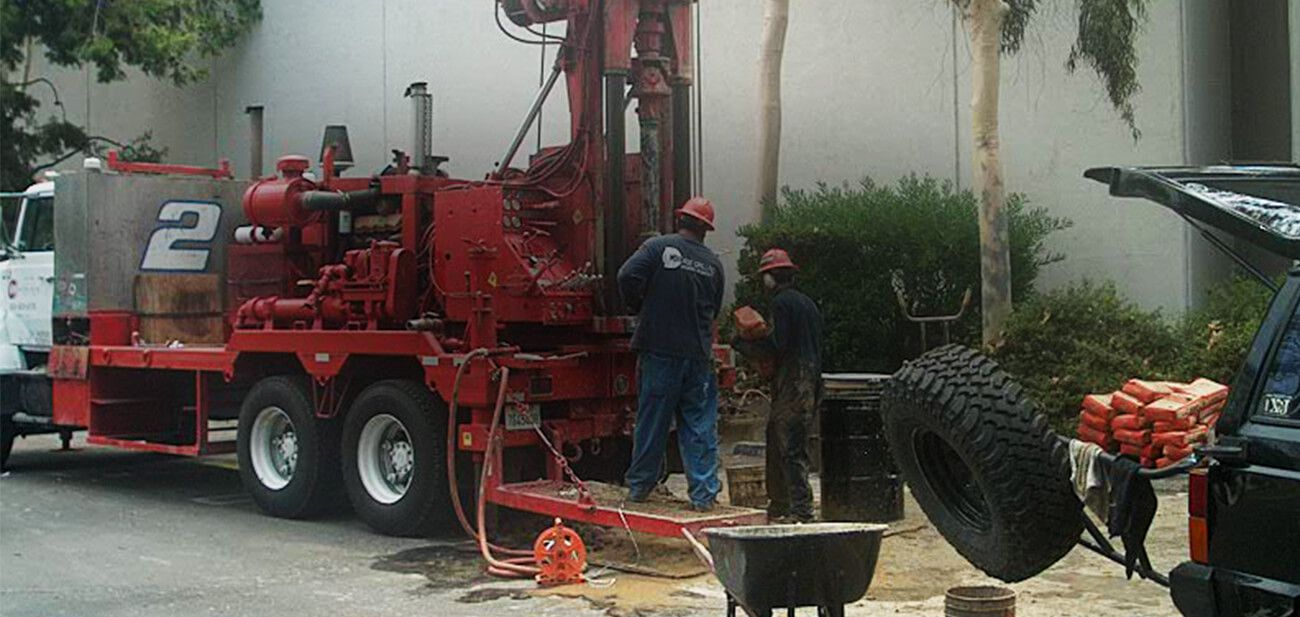Top Benefits of Using Geotheta in Geotechnical Research and Applications
Top Benefits of Using Geotheta in Geotechnical Research and Applications
Blog Article
Navigating Geotechnical Solutions: The Importance of Geotechnical Reports, Soil Compaction Testing, and Pavement Design in Ensuring Structural Integrity
Geotechnical solutions, including the manufacturing of geotechnical reports, carrying out dirt compaction screening, and careful sidewalk layout, offer as the foundation of making certain structural stability. geotheta. These important elements not only lay the foundation for successful task implementation yet additionally mitigate possible dangers that can endanger the security and longevity of a building job.
Relevance of Geotechnical Records
Geotechnical reports play a vital duty in providing thorough insights right into the soil and rock problems of a website, essential for making sure the structural honesty of building and construction projects. These reports are a basic part of the preliminary website investigation process, supplying valuable info that affects the layout, construction methods, and general feasibility of a task. By evaluating dirt structure, stability, and prospective hazards such as landslides or sinkholes, geotechnical reports enable engineers to make educated choices relating to structure layout and building techniques.
Additionally, geotechnical reports help in threat assessment and mitigation strategies, aiding job stakeholders understand the prospective difficulties that might develop during building. Through detailed evaluation and interpretation of geotechnical information, engineers can create options to resolve site-specific concerns, making sure the lasting stability and security of the structure. Eventually, the thorough nature of geotechnical records offers as an important foundation for successful job planning and implementation, minimizing dangers and enhancing general project outcomes.

Role of Soil Compaction Screening
Exactly how important is the evaluation of dirt compaction through testing for ensuring the security and durability of building and construction jobs? Dirt compaction screening plays an important duty in the building market by guaranteeing that the dirt beneath a structure is correctly compacted to sustain the desired load and prevent settlement (geotheta). Effectively compacted soil provides a steady structure for buildings, roadways, and other structures, minimizing the danger of structural failure and pricey repairs in the future
Dirt compaction testing entails determining the thickness of the dirt and comparing it to the optimum density possible for that specific soil kind. This assists engineers establish if the dirt has been compacted sufficiently to support the planned structure. By conducting soil compaction examinations throughout building and construction, designers can recognize any type of locations that call for added compaction and take rehabilitative steps prior to proceeding with additional construction.
Value of Pavement Design
Evaluating dirt compaction with screening not only guarantees the stability and durability of building jobs yet also lays a crucial foundation for efficient sidewalk design. Proper pavement layout thinks about factors such as web traffic load, ecological conditions, soil features, and product buildings to create a robust and sustainable surface. By incorporating data from click to read dirt compaction tests, engineers can determine the appropriate thickness, materials, and layering for the pavement to hold up against expected stresses and keep structural integrity over time.
Making Certain Structural Stability
These records offer necessary information on soil structure, security, and possible dangers, helping in educated decision-making during the design and construction stages. Additionally, carrying out comprehensive soil compaction screening is critical to guarantee that the dirt under structures or pavements is effectively compressed to support the desired loads and prevent settlement problems.
In addition, applying robust pavement style techniques is crucial for making sure the structural stability of roadways, car park, and various other smooth surface areas. Proper pavement style considers factors such as website traffic quantity, environmental problems, and dirt features to develop resilient and secure transport facilities. By sticking to these practices and making use of geotechnical services properly, construction projects can improve their architectural honesty, decrease risks of failing, and guarantee the lasting efficiency of the developed atmosphere.
Safeguarding Versus Risks
Taking into account the vital importance positioned on making sure structural honesty through thorough interest to material selection and dirt screening, securing against dangers comes to be critical in keeping the security and long life of building and construction tasks. Dangers in construction tasks can stem from various sources, consisting of all-natural catastrophes, soil instability, or layout defects. To secure useful source versus these risks, comprehensive danger evaluation procedures must be implemented at every phase of the task. This includes extensive geotechnical investigations to recognize possible hazards, such as soil disintegration or seismic activity, that could jeopardize the project's security.
Moreover, establishing contingency strategies and carrying out durable surveillance systems can aid reduce unforeseen dangers that might occur during building. Normal inspections and quality assurance actions need to be brought out to ensure that materials are utilized according to requirements which building practices follow market requirements. By proactively determining and addressing prospective dangers, building and construction jobs can boost their resilience and decrease the probability of architectural failings, inevitably guaranteeing the safety and longevity of the built setting.
Final Thought

Dirt compaction screening plays a vital function in the construction industry by making certain that the soil below a framework is properly compressed to support the intended load and prevent settlement.Dirt compaction testing entails gauging the density of the soil and contrasting it to the optimum density attainable for that particular soil type (geotheta). By performing dirt compaction tests during construction, engineers can recognize any kind of areas that require added compaction and take rehabilitative procedures before continuing with more building and construction
Furthermore, conducting extensive soil compaction screening is important to guarantee that the dirt underneath sidewalks or foundations is correctly compressed to support the desired tons and prevent negotiation issues.
In conclusion, geotechnical reports, soil compaction screening, and sidewalk style play critical duties in guaranteeing the architectural integrity of construction projects.
Report this page